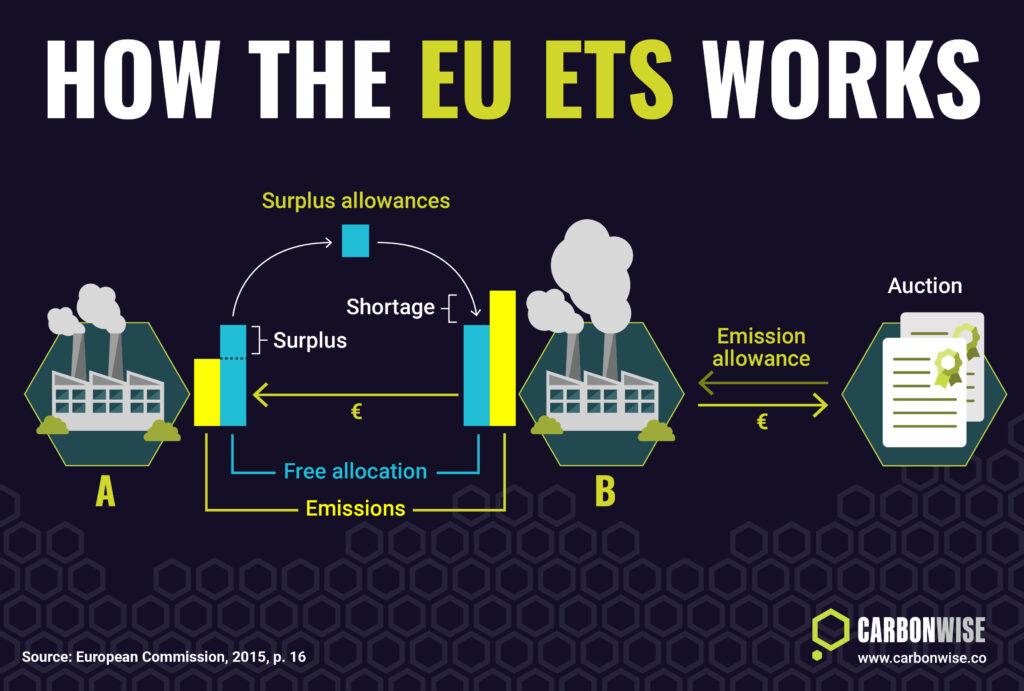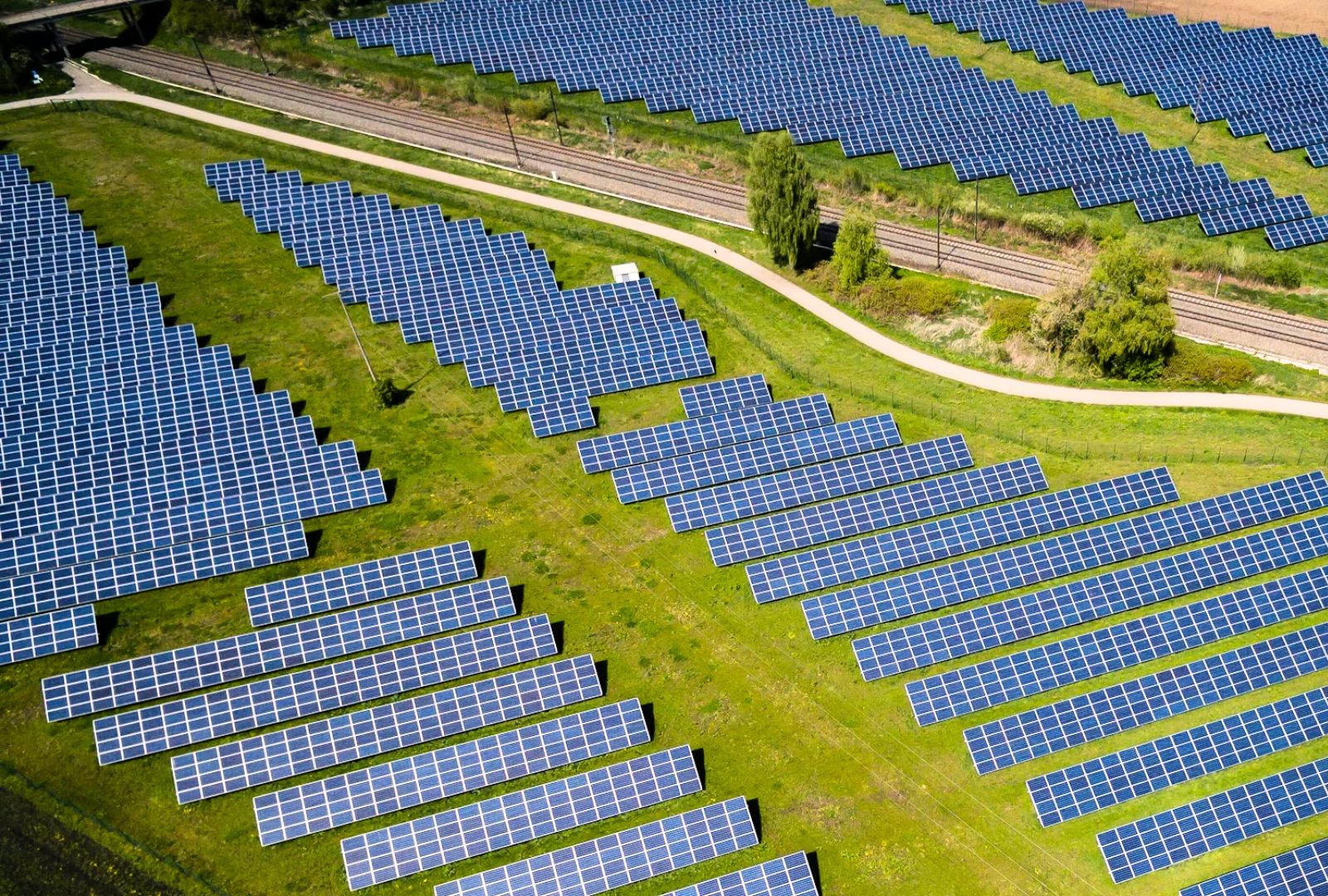
This graphic illustrates how carbon trading actually works under the EU Emissions Trading System. Company A’s emissions are below its free allocation of carbon allowances, creating a surplus. Company B’s emissions are above its free allocation, meaning it doesn’t have enough allowances to comply with the system and is facing fines for potential non-compliance. Company B has three options to meet its obligations: buy surplus allowances from Company A; buy allowances from government auctions; or reduce its emissions to avoid having to buy any allowances.






